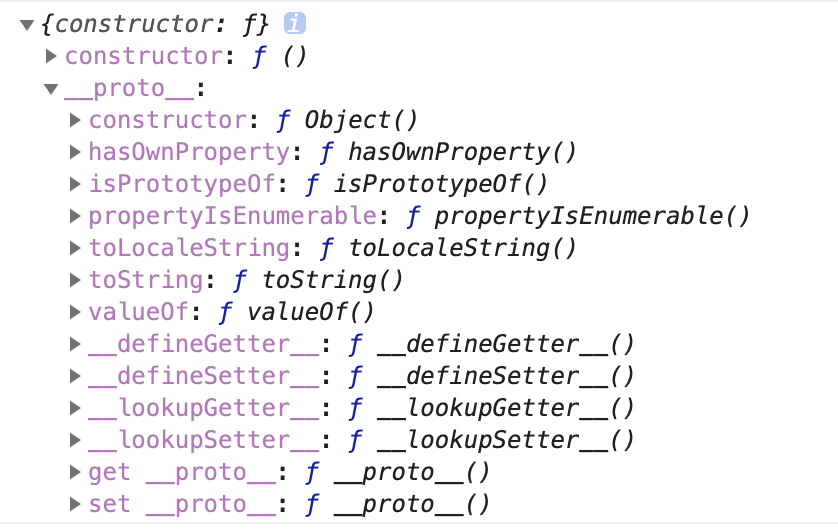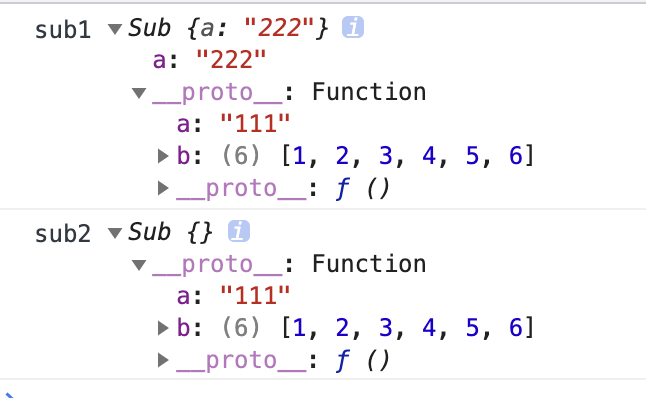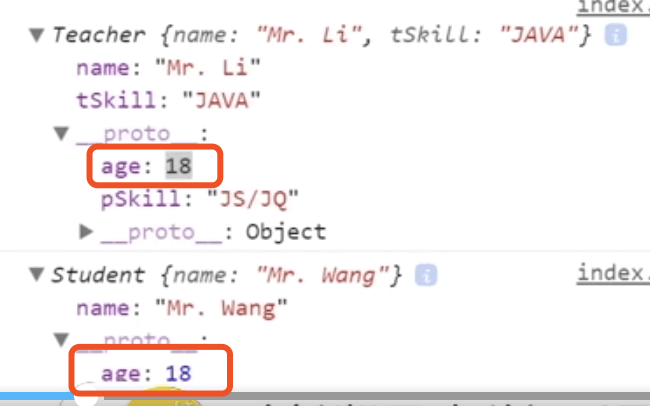| 学习时间 | 完成时间 ✅ | 重难点 | 疑问/遗漏 |
|---|---|---|---|
| 复习时间 | |||
计算器插件;(function(){var Compute=function(){}Compute.prototype={plus: function(a,b){return a+b;},munus:function(a,b){return a-b;},mul:function(a,b){return a*b;},div:function(a,b){return a/b;}}window.Compute=Compute;})();var compute=new Compute();compute.munus(1,2)
通过改变this的指向,公用属性(这种方式无法继承Teacher的原型)Teacher.prototype.wife='Ms.Liu';function Teacher(name,mSkill){this.name=name;this.mSkill=mSkill;}function Student(name,mSkill,age,major){Teacher.apply(this,[name,mSkill]);this.age=age;this.major=major;}var student=new Student('Mr.Zhang','JS/JQ',18,'Computer')console.log(student.wife) //undefined公共原型function Teacher(){this.name='Mr.Cao';this.tSkill='JAVA';}Teacher.prototype={pSkill:'JS/JQ'}var t=new Teacher();console.log(t)function Student(){this.name='Mr.zhang'}Student.prototype=Teacher.prototype;Student.prototype.age=18;var s=new Student();//将Teacher的prototype赋值给Student的原型,此时改变Student的原型,Teacher的原型也跟着改变了
继承
圣杯模式
实现继承又不改变父元素的原型的实现方式圣杯模式function Teacher(){this.name='Mr.Li';this.tSkill='JAVA';}Teacher.prototype={pSkill:'JS/JQ'}var t=new Teacher();function Student(){this.name='Mr.Wang';}function Buffer(){}Buffer.prototype=Teacher.prototype;var buffer=new Buffer();Student.prototype=buffer;Student.prototype.age=18;var s=new Student();console.log(s) //此时给Student添加原型属性,将不会改变Teacher的原型封装的写法方式一function inherit(Target,Origin){function Buffer(){}Buffer.prototype=Origin.prototype;Buffer.prototype=new Buffer();Target.prototype.constructor=Target;Target.prototype.super_class=Origin;}方式二(模块化开发)var inherit=(function(){var Buffer=function(){};return function(Target,Origin){Buffer.prototype=Origin.prototype;Buffer.prototype=new Buffer();Target.prototype.constructor=Target;Target.prototype.super_class=Origin;}})();function Teacher(){}function Student(){}inherit(Student,Teacher);var s=new Student();var t=new Teacher();当使用构造函数的时候,每次实例化的时候,构造函数都会return this如果显示的写return {},则会返回return {},如果是基本数据类型则会不生效,依旧返回this
MDN上的对象原型
原型链的定义
JavaScript 常被描述为一种基于原型的语言 (prototype-based language)——每个对象拥有一个原型对象,对象以其原型为模板、从原型继承方法和属性。原型对象也可能拥有原型,并从中继承方法和属性,一层一层、以此类推。这种关系常被称为原型链 (prototype chain),它解释了为何一个对象会拥有定义在其他对象中的属性和方法。
原型的定义
在javascript中,函数可以有属性。每个函数都有一个特殊的属性叫做原型(prototype)
constructor是原型上的一个属性,该属性指向用于构造此实例对象的构造函数
function doSomething(){}console.log( doSomething.prototype );//如何声明函数并不重要var doSomething = function(){};console.log( doSomething.prototype );

⚠️
function Foo(){this.a=1;}var foo=new Foo();Foo.prototype={aa:10}console.log(foo.aa);//undefined 要在实例化之前改变数据,才可以访问到
原型链的继承方式
1、原型链继承; 引来 引用值共享问题2、构造函数继承; 没办法拿到父级原型链上的方法3、组合继承; (伪经典继承)4、寄生组合继承; (经典继承)5、圣杯模式6、extends 继承function Super(){this.a='111';this.b=[1,2,3,4,5]}Super.prototype=function(){console.log(222)}function Sub(){}Sub.prototype=new Super();var sub1=new Sub();var sub2=new Sub();sub1.a='222';sub1.b.push(6)console.log('sub1',sub1)console.log('sub2',sub2)引发的问题:引用值共享问题措施:使用构造函数的方式但是构造函数类型的继承,没有办法拿到原型上的方法我们需要使用组合继承的方式(伪经典继承)=>寄生组合继承 缺点:Sub.prototype=Object.create(Super.prototype);自组建的原型有可能被覆盖=>解决方案 圣杯模式function Sub(){Super.call(this)}// Sub.prototype=new Super();var sub1=new Sub();var sub2=new Sub();sub1.a='222';sub1.b.push(6)console.log('sub11',sub1)console.log('sub22',sub2)组合继承,就可以拿到原型上的方法function Sub(){Super.call(this)}Sub.prototype=new Super();寄生组合继承function Sub(){Super.call(this)}Sub.prototype=Object.create(Super.prototype);




